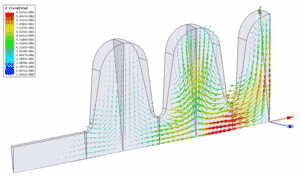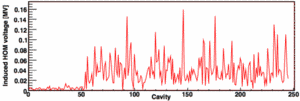The Superconducting Proton Linac (SPL)
The SPL project aims for the development of a superconducting, high current H- accelerator at CERN. It is part of the injector chain upgrade for the Large Hadron Collider (LHC). Some parts of the current injector chain are already more than 40 years old and operate at their technical limits. In addition, future projects like e.g. a CERN based Neutrino factory or EURIOSL require higher beam power that would not be available with the present injector complex. The technical design of this challenging machine is presently done within an international collaboration.
The particular challenges of this project are:
- Development of high gradient, superconducting cavities, operating at high beam currents;
- Operation with low losses of high-power H- beams, ensuring hands-on maintenance;
- Realization of unprecedented proton beam power at low energies (5GeV).
The research of the QUASAR group in this project presently focuses on the following points:
- Characterization of Higher Order Modes (HOM) in the cavities and their interaction with the beam;
- Development of damping mechanism like HOM couplers;
- Investigation of mechanical effects, like Lorenz-force detuning.
- Investigations of the microwave surface resistance of superconducting materials (also carried out in the framework of the HIE ISOLDE project).
Characterization of Higher Order Modes (HOM):

HOM beam interaction
In order to study HOMs one needs several parameters e.g their frequency and their field distribution. Based on geometrical cavity models 2d and 3d simulations with tools like MWS, HFSS, OPERA, Superfish, Mafia or Urmel are carried out and benchmarked against each other.
Higher Order Mode (TM020 PI) in a medium beta (beta=0.65) SPL cavity.
The HOMs are excited by the beam itself and their action back at the beam is studied. The characteristics of these modes are used as input parameters for beam tracking simulations. Therefore a new code is developed taking HOMs as well as other errors like RF or cavity errors into account. Both planes (longitudinal and transversal) are handled by this code.

HOM voltage distribution along the linac of mode per cavity
Selected publications:
- M. Schuh, F. Gerigk, J. Tückmantel, C.P. Welsch, 'Higher Order Mode Beam Breakup Limits in the Superconducting Cavities of the SPL', Proc. SRF Workshop, Berlin, Germany (2009)
- F. Gerigk, M. Schuh, C.P. Welsch, 'Higher Order Modes in the Superconducting Cavities of the SPL', Proc. Part. Acc. Conf., Vancouver, Canada (2009)